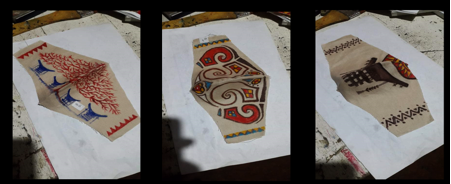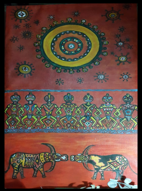Jaeyeon Choe, Bournemouth University
Kathleen Adams, Loyola University Chicago
Mary Mostafanezhad, University of Hawaiʻi at Mānoa
Thi Linh Giang Phi, Aalborg University
During a recent webinar entitled “Tea Time Chat: Southeast Asia Tourism, COVID-19 and Silver Linings,” four scholars of Southeast Asia including Indonesia, Myanmar, Thailand, and Vietnam, discussed some of the opportunities that have emerged from the rumble of the COVID-19 pandemic in the region. The conversation addressed several key questions: Despite the negative impacts of the pandemic on the regional economy, what are the emerging opportunities for local tourism businesses in Southeast Asia? How can domestic tourism work be developed and supported in the region? Will remote, poor and rural areas benefit from preferences by domestic and international tourists for quiet and tranquil places and activities that would aid their mental health recovery?
The participants shared very vivid examples and stories from the region. Kathleen M. Adams emphasised how the crisis has triggered numerous creative tourism product initiatives in Indonesia, including online commerce and virtual tourism experiences for tourists, such as cooking classes. Significantly, it is local people who are being proactive in initiating these businesses, with the opportunity, opening pathways towards new livelihoods.
Mary Mostafanezhad emphasised that many government and non-governmental tourism organizations are using the pandemic as an opportunity to pause and reflect on how to sustainably address ceaseless over-tourism in Thailand. As one of the most visited destinations in the world, Thailand has suffered ecological damage and extensive degradation to cultural, heritage and religious sites throughout the country. Thi Linh Giang Phi shared how in Vietnam, many people who lost jobs in the tourism and hospitality sector returned to their family farms. With family farms as a stable livelihood resources, many urban residents have utilized this opportunity to leverage their ties to rural areas and in doing so, have demonstrated extraordinary resilience in the face of ongoing restrictions and loss of tourism revenue.


One “silver-lining” in Indonesia is an explosion of creative enterprises, in the broad sense of the term. Faced with evaporating bookings, some Indonesian tourism entrepreneurs are crafting and selling online experiences and goods. For instance, in the cultural tourism destination of Toraja (Sulawesi), where Adams conducts research, some souvenir carvers are now turning to local markets and making new-genre ethnic coffins with Toraja designs, as they did previously when tourism stalled. Others are producing protective masks embellished with classic Toraja design motifs and even Toraja-styled paintings that incorporate struggles against COVID-19. As Adams observes, this Indonesian creativity in times of hardship suggests new strategies for resilience that can be embraced by those in the struggling tourism sector in other parts of the world.

The COVID-19 pandemic, subsequent lockdowns and mobility restrictions have led to a crisis in the tourism industry in the Southeast Asia and around the world. We have witnessed economic devastation, including job losses and falls in remittances; leading to social problems and challenges for younger generations to find secure, full time employment in the industry. However, we believe that it is equally important to look at opportunities and silver linings, not just from an environmental perspective (e.g. reduced pollution, reduced extraction of resources, such as water) but also from a socio-economic perspective. We have observed increased efforts by government, policymakers and tourism authorities as well as businesses and communities who depend on tourism, to re-build tourism in a more equitable way. We have also witnessed efforts towards economic diversification. We have identified local initiatives, business models and creative businesses ideas. The demand for remote destinations where social distancing is possible, and where tourists can mentally recover from the pandemic stress may see the development of activities in rural, unexplored and poor destinations. This may help diversify income sources in rural destinations and even support new livelihoods. It is crucial that residents have the opportunity to benefit from their local natural and cultural resources, as Southeast Asia has long been characterized as a so-called ‘playground’ for foreign tourists.
You can watch the Tea Time Chat: Southeast Asia Tourism, COVID-19 and Silver Linings via YouTube.